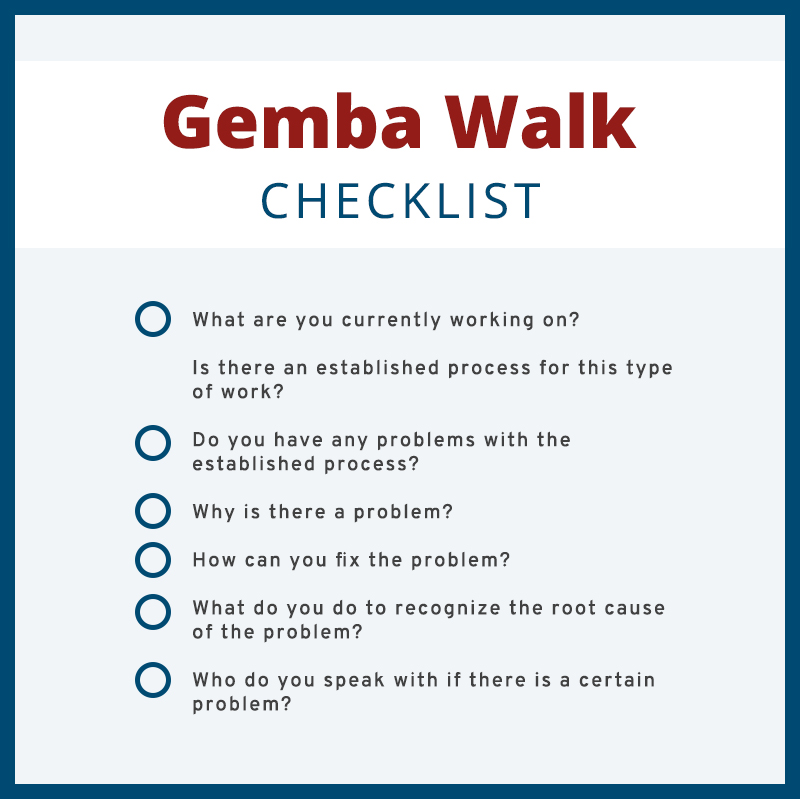Gemba Walks bring managers closer to what is happening within the organization through observation and questioning. The walks are not only to take note of processes but also to observe the operators’ state of feelings.
The Value of Gemba Walks

Gemba Walks bring managers closer to what is happening within the organization through observation and questioning. The walks are not only to take note of processes but also to observe the operators’ state of feelings.

For managers a critical part of their job is understanding what is happening at all levels within the organization. However, as Henry Mintzberg notes in his book Simply Managing, one of the quandaries for a manager is “how to keep informed, keep in touch- when managing by its own nature removes the manager from the very things he or she is managing.” One of the ways to address this issue is “management by walking around (MBWA)”, a term popularized by American business writer Tom Peters. MBWA refers to a style of business management which involves managers wandering around, in an unstructured manner, through the workplace, at random, to check with employees, equipment, or on the status of ongoing work. But is wandering through the workplace in an unstructured manner enough to find out what is happening within different levels of the organization and to get the information required for good decision making?
In the Collaborative Mindset Module of the International Masters Program for Managers(IMPM) delivered by Yokohama National University of Japan, participants were introduced to “Gemba” or Gemba Walks which go beyond “management by walking around”. Gemba is a Japanese word meaning “the actual place.” In lean practices, the Gemba refers to “the place where value is created,” such as the shop floor in manufacturing, the operating room in a hospital, the job site on a construction project, or the kitchen of a restaurant. These are the places where employees are involved in and are close to the work output of the organization.
Gemba Walks bring managers closer to what is happening within the organization through observation and questioning. The walks are not only to take note of processes but also to observe the operators’ state of feelings. There are a number of reasons Gemba Walks are effective in improving workplace processes and motivating employees. Opportunities for improvement are easier to spot from the work place than in the boardroom. Gemba Walks reinforce executive commitment to improvement and create a greater and more empathetic connection between workers and management.
The Gemba Walk is also useful when managers want information about a specific concern around a certain key performance indicator. The manager can ask very in-depth questions about the process being observed. Who is involved? What materials are used? What do you do? How do you know what to do? When does the task take place? What depends on the outcome?
A clear illustration of how seriously Gemba is taken by some executives is shown by the example of Mitsuru Kawai. He is one of the six Executive Vice Presidents at Toyota Motor Corp and refused to use his office in the HQ building even after becoming Vice President. Instead he maintains his office in the casting factory, close to the workers. As he says, “The reason why I’m so committed to the Gemba is that if you stay in the Gemba for decades, you can sense the sound, the smell, and anything unusual about the people. I feel my sensitivity becomes blunt if I don’t put myself in this environment. When you stay in Gemba for a long time, no matter where you are in the factory, you can sense many things through atmosphere or workers’ face expressions.”
So, the questions for you, as a manager should be where and how do I get my information, and what steps do I take to act on it?
Interested in IMPM’s Masters Program for Executives?
SIGNUP TO OUR NEXT INFORMATION SESSION
